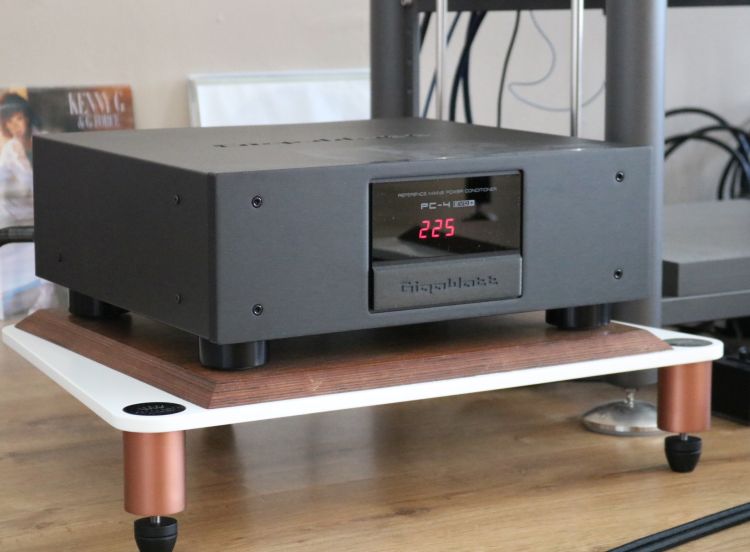
Review samples supplied by Ohm Audio
Retail prices in the Netherlands, including 21% VAT:
Including LC-2 EVO cable: 8.070 euro
Including LC-3 EVO cable: 8.535 euro (as reviewed)
More power cable options available
After the great results with the GigaWatt G-C16A Circuit Breaker, G-044 Schuko Socket and LC-Y EVO 3X4 In-Wall Cable it was time to check out the best that the brand has to offer and that would be the PC-4 EVO+ power conditioner.
Technical
Fit in a big and heavy, low-resonance cabinet and supported with anti-vibration Rolling-Ball Isolation feet, the PC-4 EVO+ has twelve, high-quality proprietary power sockets with large surface contacts which have been subdued to the process of technical silver plating without the use of intermediate metals, like copper or nickel. These sockets are additionally cryogenically treated and de-magnetized.
The PC-4 EVO+ is equipped with a DC Offset Blocker, Overload Protection and Surge Protection. There are no traditional protective elements, like thermal or blow fuses, which throttle the current flow. Rather, the surge protection is provided by plasma spark-gaps, UltraMOV new generation varistors and an initial filter. Overload protection is provided by a two-pole hydraulic-magnetic switch from Carling Technologies made to a special specification from GigaWatt. The interference is damped by filtering blocs of RLC type, built around proprietary Audio Grade capacitors and HF (High Flux) core filters.
There are three, independent filtering branches, which supply three sections, composed of four output sockets each. The filtering inside is not standard either. The main novelties are the anti-interference capacitors and the compensation batteries for the buffering circuits, which are manufactured by the company Miflex, according to GigaWatt specification.
The internal distribution between sections is done in a star-configured manner via massive distribution rails, made from polished slabs of OFHCC 10100 oxygen-free copper with a 99.997% purity and the dual-layer PCBs, onto which the filter components are placed, have very wide traces made from silver-plated copper.
On its front is a voltmeter that is said to be resistant to distortion and measurement errors while at the same time not generating any interference, which would impair the quality of the power filtered by the unit. This voltmeter display is red as standard but is available in green, blue or white on demand. On the rear is a very handy LED that lights up when there is a fault with the grounding or if the polarity is connected in reverse.
The internal construction of the elements of the PC-4 EVO+ conditioner allows for transferring loads up to 25A constantly (and 90A peak), which, the company notes is not required for the lossless power transfer from the power grid, but to have an oversized reserve of power for peak, impulse loads.
To allow for the maximum impulse response, the PC-4 EVO+ is equipped with a double buffer circuit with Audio Grade compensation batteries in a proprietary design. This circuit increases the current output with non-linear loads, such as power amplifiers and eliminates the power difference between the input and output of the conditioner. This allows for almost unlimited impulse capabilities not normally associated with passive conditioners and not realistically possible from active consumer conditioners.
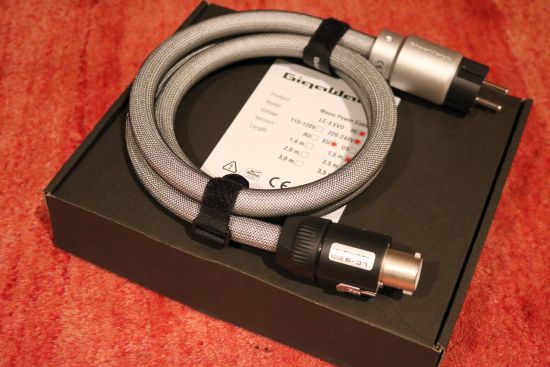
Also supplied was the GigaWatt LC-3 EVO power cable
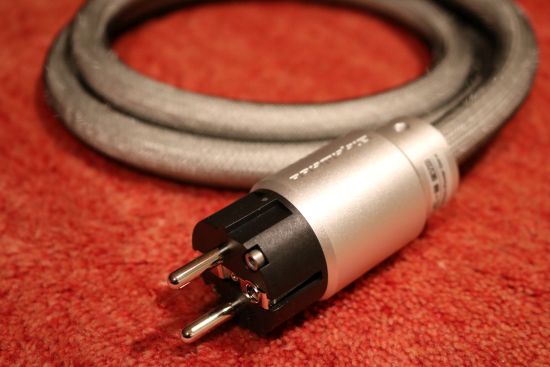
Back Story
Historically, I have never been a fan of power conditioning. Whether active regeneration, passive in series or passive in parallel, never did I feel that benefits came without a cost. With active regeneration, I found that the transients became considerably sharper and the sound was a lot more vivid and direct but at the same time I felt that the natural flow and the organic quality were much diminished. Passive filtering would seem to be less intrusive and in some ways, it is. However, the main issue with series passive filters is that the filter component is in line with the power and thus the current flow can be impeded which usually results in diminished dynamic behavior or indeed a “filtered” effect. While this can be beneficial in situations where the sound is otherwise a little hard or edgy, systems that are already well-balanced can be thrown off, and in my case that always happened. Parallel passive filters, finally, have no components placed in series with the power and thus should theoretically not impede the current flow and not inhibit (the sense of) dynamics. However, I still found that the transients softened and the propulsion diminished and after having heard the same issues with every brand and model that I tried, at last, I lost interest in the subject.
When Derk Broos of Ohm Audio asked me if I was interested in testing a GigaWatt power conditioner I told him of my negative experiences but Derk insisted that rather than diminish, the dynamics would actually improve and even though I did not really believe this, I was intrigued and decided to give the PC-4 EVO+ a chance.
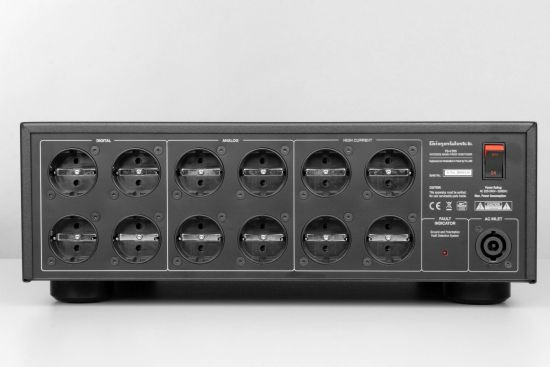
As I would eventually find out, the PC4-EVO+ is quite unlike any other conditioner that I have used and, ultimately, it works fabulously. But it did come along with some growing pains. Bear with me while I describe the entire process, starting what did not work.
Test Setup 1 – no luck
To start off my comparisons, I left all my audio components connected to the existing two 8-way extension blocks and simply swapped the two cables that feed them from the audio group outlet to the PC4-EVO+’ High Current outputs. The supplied GigaWatt LC-3 EVO power cable was used to power the PC4-EVO+ from the same wall outlet that normally powers my two extension blocks. The main power cable that I use for the audio group is an uninterrupted length of standard “VD” 2,5 mm solid core installation wire connected to a regular automatic circuit breaker in the utility box.
With the conditioner in place, the sound did not become ill-defined or warm and remained accurate. Actually, it became a little cleaner and drier. But there were many downsides: the music now sounded “canned”, less saturated and less lyrical. The soundstage had also changed from being room-filling to being confined between the speakers and also dynamically it was very different. Whereas previously there was a canvas with individual sounds leaping out from it, now everything remained inside the canvas and it only moved as a whole.
Even though I feared that this might happen, this was not the result that I was hoping for.
I contacted Derk and explained to him what I heard. He told me that this is not how he hears it but also that the way that I made the comparison does not work. Apparently, the unit needs some time to unfold its true potential. Derk told me that it may not sound very impressive at first but that it gains liveliness and dynamics the longer that it is used until it reaches its optimum level. And apparently, you’re in for a nasty surprise when you then switch back to the old situation. Lastly, he advised me to connect the components directly to the unit.
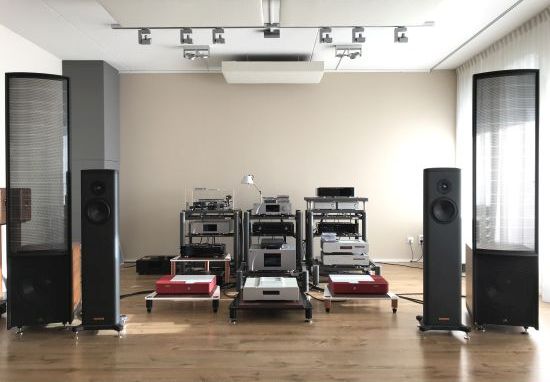
Test Setup 2 – wait for it…
Since I have too many components to all connect directly to the conditioner I narrowed it down to a neat and simple system consisting of the Antipodes CX server, CH Precision C1 DAC and CH Precision A1.5 power amp and used the Magico S1 MkII loudspeakers with Driade Flow 405 speaker cables. The server and DAC were connected to the PC-4 EVO+’s Digital section and the amplifier to the High Current section.
Even though the system was now connected conform the intended method, the first impressions were similar to what I heard when the entire system was powered from the PC-4 EVO+ via the extension blocks. The delivery was tight but gray and dull and lacking directness and liveliness.
But, to properly test this, the system needed to be used like this for an extended period, two weeks, Derk advised. And sure enough, although I wasn’t yet impressed later in the day or even the next day, after a couple of days, I noticed how I got more and more involved with the music. As more days went by, I started to notice that the dynamics were definitely more lifelike than before and there was no denying that my foot was consistently tapping. What I also noticed, even when sitting in the other room typing, was that the music was incredibly coherent and even though this is one of the Magico’s core qualities, I now appreciated it even more. And sure enough, after what must have been two weeks, I could not help but conclude that I was consistently so happy with the sound that I was reluctant to change the setup. Go figure!
Having forced myself to reinstate the old situation I had to face a considerable disappointment! There was significantly less magic leading to an all but entirely diminished emotional involvement. What caused this? For starters, the sound was now grayer and drier and spatially restrained and stilted. There was much less free-flowing movement and everything seemed comparatively stuck to the speakers. Now recall that I felt precisely the same when inserting the PC-4 EVO+ in the first place and it is clear that Derk was 100% right when he said that the unit just needed some time.
With my default power setup, the focus was still good and the PRaT was also intact. In fact, the pacing was now slightly faster than with the conditioner but the bass was more staccato and lacking real impact. And most importantly, the dynamics now felt more restrained than with the PC-4 EVO+ in place!
This was not fun. Normally, my perception of the system’s delivery resets after a while and I can enjoy it again. But not this time! Even two days down the line I was still feeling that the system had lost a large amount of magic and emotional involvement and the feeling did not come back until I carried out a couple of small but very important tweaks. And, as it turns out, those tweaks also carry the GigaWatt name!
What happened next is that I conducted a review of several GigaWatt accessories in which the G-C16A Circuit Breaker and G-044 Schuko Socket played a major part in bringing back the emotional involvement and overall satisfaction that I had lost when removing the PC-4 EVO+ from my system. Nope, it’s not the same as with the conditioner in place. Actually, the PC-4 EVO+ does more for the system even when fed from a standard outlet and a standard automatic breaker than the GigaWatt Circuit Breaker and Schuko Socket combined, but that is precisely as it should be, of course. If I had sufficient funds, the PC-4 EVO+ had not been allowed out of my system again. But keeping the GigaWatt Circuit Breaker and the Outlet definitely did make parting with it a little bit less hard.
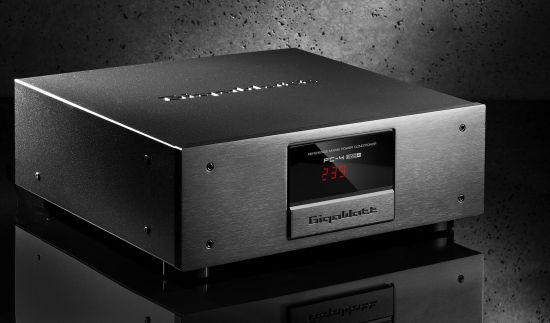
Conclusion
The PC-4 EVO+ is quite unlike any other conditioner that I have used. For a change, it does actually deliver on the promise of not reducing the expressiveness or dynamics, rather, it increases the liveliness and dynamic impact while allowing the music to flow more freely and organically. Put simply, the PC-4 EVO+ acts to remove restraints without any penalties.
Do note that the unit does not deliver on its promise right away. It needs some time to settle but once it has, you will not want to part with it again!

External Links
Distributor for the Netherlands: Ohm Audio
Manufacturer: Gigawatt.eu
Read Also
GigaWatt LC-Y EVO cable, G-C16A Circuit Breaker and G-044 Schuko Socket
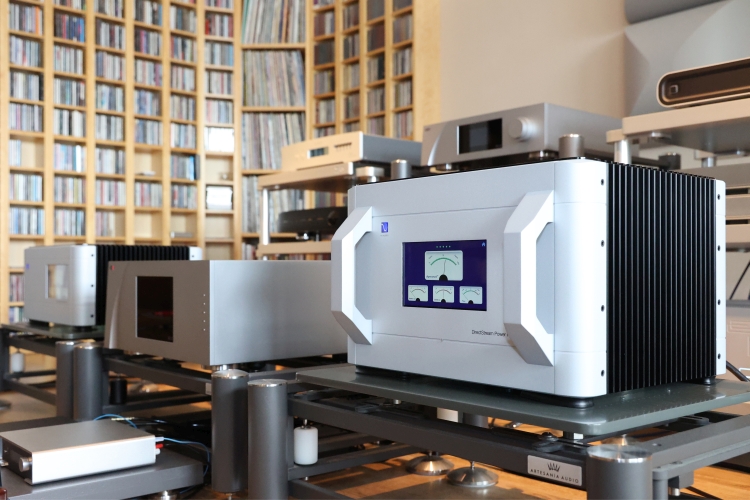



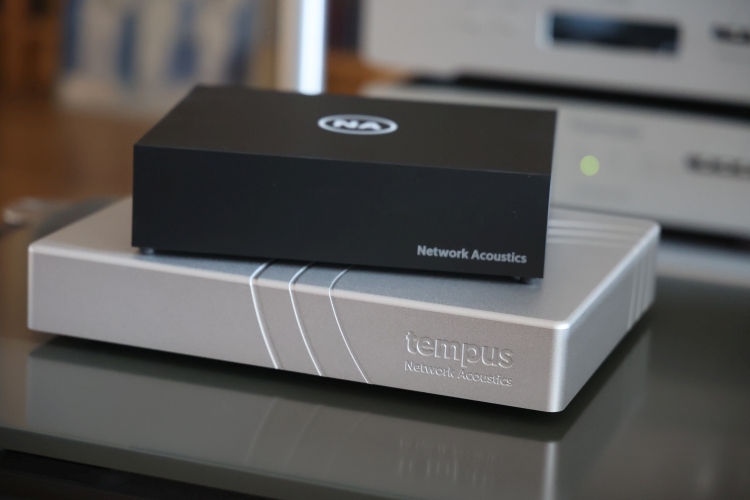

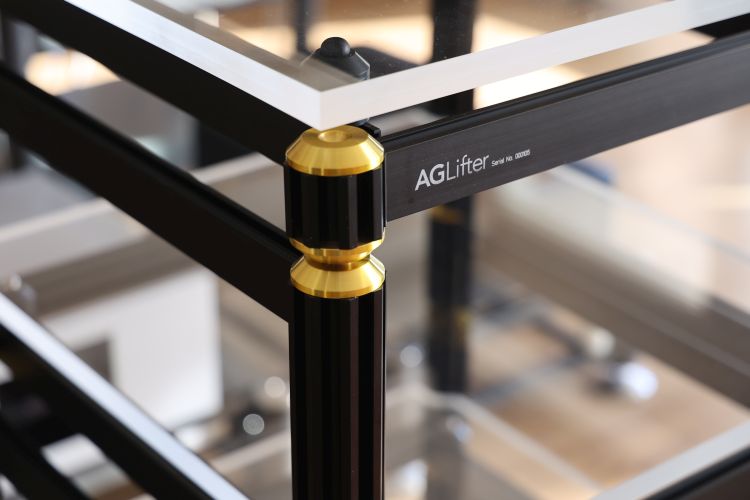
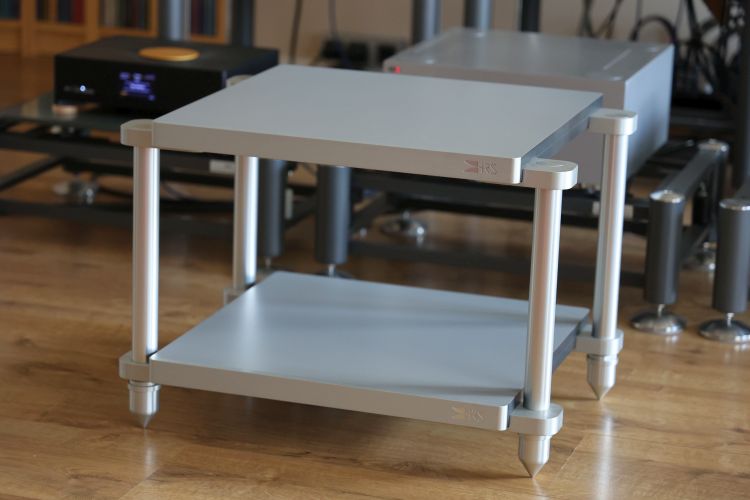
I would have been curious if you also tried to power the ESL 15A with Gigawatt. The D class bass amplifier is also sensitive to power cables in my experience.
Also, I’m curious if it could handle a big A class like Pass. 🙂
I’ve not tried the Logans with it. Its power delivery rating far exceeds what a domestic installation can provide. Therefore, the 600 or so Watts required by a big Class A amp should pose no issue at all.
I own the PC2 EVO+ and it improves the sound of my setup significantly. Indeed no loss of dynamics (more the opposite), more details, better bass, improved imaging etc. (Devialet Expert Pro 220, Audio Physic Avanti 30th).
I have the feeling that GigaWatt offers great value for money and focuses on the product instead of on a lot of marketing bla bla like some competitors
Again Christiaan, another interesting article. I have been looking at one of these but also the Torus AVR16. I have read very good things about the latter but as I don’t have power amps, per se in my system I’m wondering if the AVR is overkill. Have you any dealings with Torus Power?
Alas, I’ve no experience with the Torus Power.